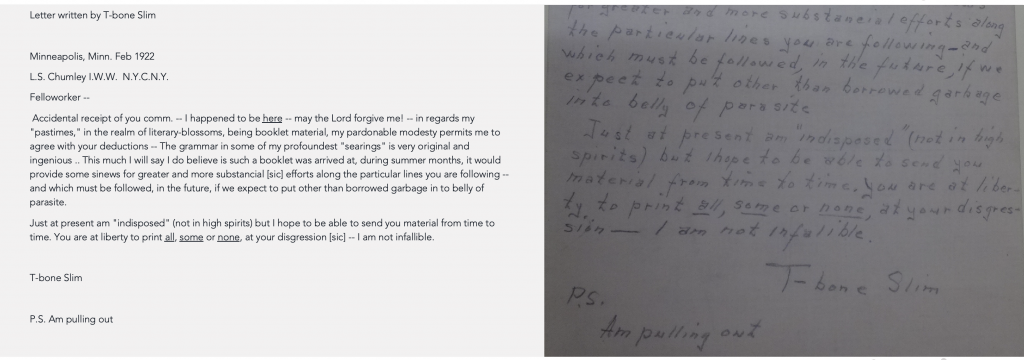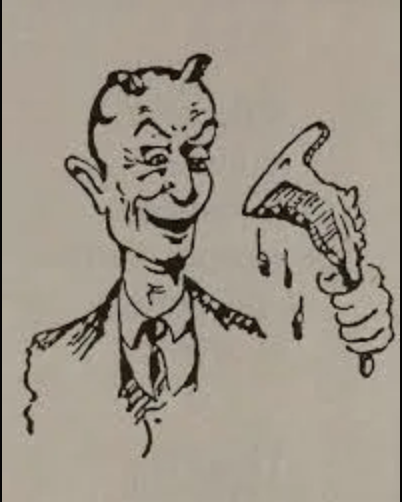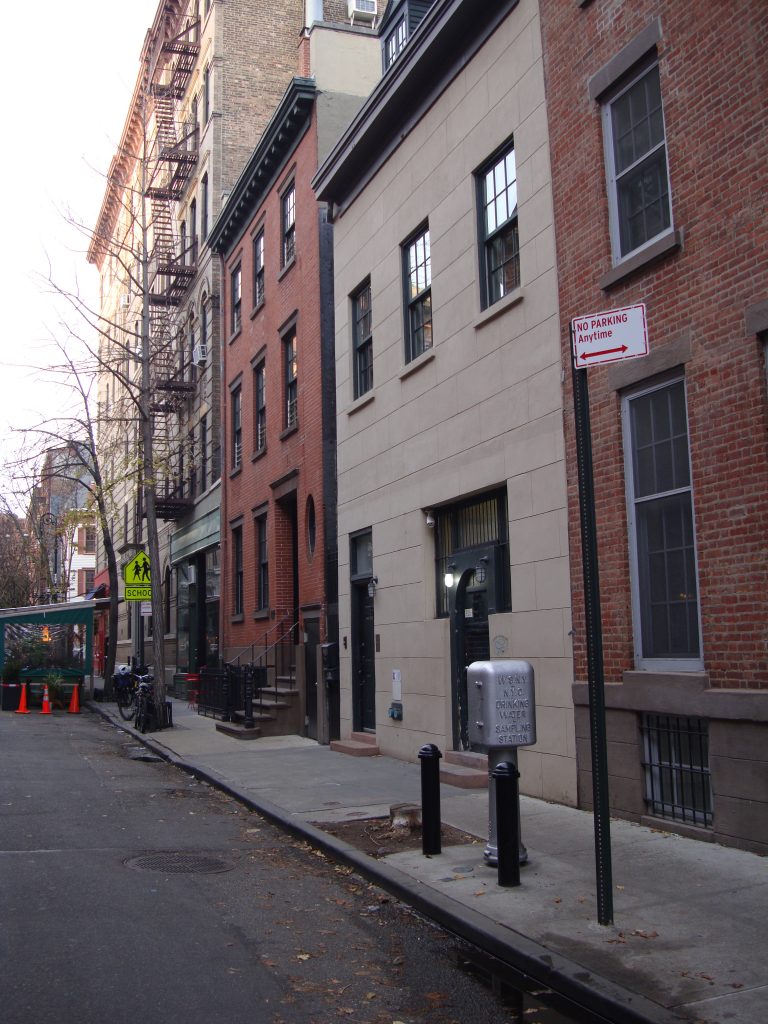
AUTHOR: Marija Dalbello
From my Archival “Digs”
PART I: Finding Slim!
Entering the collection of the Industrial Workers of the World (I.W.W.) in the Rare Book & Manuscript Library at Columbia University documents the immigrant working class struggle from a century ago. Among the various pamphlets, prison manuscript newspapers, and correspondence, I found a small letter, written in careful semi-cursive, each letter separate, words distinct, and lines slightly apart and ventilated. The letter is signed by “T-bone Slim” (Fig. 1a and Fig. 1b).
This blog post gives the story of the letter and interprets its significance for this project.


The letter is dated February 1922 and is addressed to “Felloworker” [sic] L.S. Chumley I.W.W. in New York City. He signs off, “T-bone Slim” and offers an afterthought: “P.S. Am pulling out.” Is Matti Valentin Huhta referencing that he is leaving Minneapolis or rejecting the proposal by Leland Stanford Chumley to write? The opening refers to the accidental receipt of “your comm.” [communication]. “I happened to be here — may the Lord forgive me!” [“here” is underlined in the original]. We can imagine the letter writer on what could be a freezing day of February 1922 in Minneapolis, Minnesota. We can only fill in the gaps as to what would be the “accidental communication” reaching Huhta — a written note, a message, or a rumor — which prompted him to respond. The abrupt “Am pulling out” leaves an opening, it cries for interpretation. This epistolary moment connects two fellow-workers, one of them in New York City and the other in Minnesota. They are in different moments of their activist engagement. At that time, Chumley had a long history of organizing restaurant and food workers and about to open his own establishment in New York City. On the other hand, Huhta had started writing for the I.W.W. newspapers. The figures of Slim and Chumley converge in the historical situation of which this letter is a trace.
The letter from Slim to Chumley is an important document for our project because it dates from the period when Huhta was emerging as the columnist for the English-language labor movement press. In 1921, he had started gaining visibility as a professional writer. According to the project database listing of his known documents and published writing (Kone foundation Project “T-Bone Slim and the transnational poetics of the migrant left in North America”), he wrote 46 columns for the English-language I.W.W. newspapers that year. This is also the first known professional letter from the beginning of his career as a writer, labor-movement poet, and newspaper columnist. (Apart from this we do have Huhta’s personal correspondence.) He was then 40 years old. So far this is the first hand-written document he signed by a pseudonym that he was to use for some of his writing. The February 1922 letter is preserved among the materials of the early I.W.W. archives at Columbia University because of its connection to Chumley correspondence.
Significantly, the letter self-references writing. Slim refers to his “literary-blossoms” in the form of “booklet material” (not yet columns in Solidarity, Industrial Worker, and Truth). In a half-joking tone that later epitomized his style, its writer projects a unique and singular voice. He is concerned with expressivity and affects projecting his moods. The evocative pseudonym “T-bone Slim” brings out half pictorialist, half etymological moment conveyed by the juicy “T -bone steak” that humorously conveys outrage and a program of social justice.
The steak could be contrasted with the “slim” existence of a migrant worker, possibly a figure of a starving artist, the life that Huhta himself may have experienced. At the same time, the lightness and joviality of the name resonates with the existential moment in the lives of the “starving labor” and food precarity — the trope of “hunger” that often organized the discourse of labor. The name became emblematic, recorded in the caricature accompanying his editorials (Fig. 2).

Another actor in this epistolary moment and the recipient of the letter is Leland Stanford Chumley. His notes and correspondence relative to labor organizing is preserved in the same collection where I found the Slim letter from the time that marked a professional transition for both of them. Chumley was known as activist in the labor movement who raised awareness about the conditions of workers in the restaurant and other food industry in the 1910s and early 1920s (Rachleff 2005). Formerly organizer and “one-time stagecoach driver,” he opened a restaurant later known as Chumley’s in Greenwich Village in 1922, which remained a meeting place “for Wobs, other radicals and well-known writers and artists” (Rachleff 2005: 123; Saraniero 2020). Like many such museum-like sites in the palimpsest of New York City, Chumley’s remained a place of memory — erased by gentrification of neighborhoods, which locals fondly remember through their disappearance, when yet another New York “institution” of the “old school” gets turned into a boutique or residence. Chumley’s has not re-emerged from the New York covid lockdown in 2020. Ironically, the closing may call attention to an enduring precarity of the food industry and restaurant business.

The site of the historic venue remains – at the unmarked address at 86 Bedford Street in Greenwich Village (Fig. 3), with signs on two entrances: “not Chumley’s” and “Froggy’s” (with a number for deliveries). This researcher lives and passes this site on her neighborhood walks, now enhanced by the discovery of its connection to Slim.
=====
This is the first in the series of blogs From my Archival “Digs” that focus on archival stories. I relate to documents in the mode of “drifting” (Dalbello 2019) in order to present their histories but also the aesthetic emotions and sensations that characterize archival disclosures.
=====
References
Dalbello, Marija. (2019). “Archaeological Sensations in the Archives of Migration and the Ellis Island Sensorium,” Archaeology and Information Research, a special issue of Information Research 24 (2), http://informationr.net/ir/24-2/paper817.html. Accessed November 20, 2022.
Preston, Louisa. (2022). Sketchbook drawing of Marija Dalbello presenting, “A Hauntological Manifesto for Book History,” at the panel Manifestos! co-organized with Beth Driscoll and Claire Squires, presented at annual meeting of the Society for the History of Authorship, Reading, and Publishing, Amsterdam, July 2022.
Rachleff, Peter, editor. (2005). Starving Amidst Too Much and Other IWW Writings on the Food Industry. Chicago: Charles H. Kerr.
Saraniero, Nicole. (2020). “Greenwich Village Speakeasy Chumley’s Closes For Good,” Untapped New York, July 27, 2020, https://untappedcities.com/2020/07/27/greenwich-village-speakeasy-chumleys-closes-for-good/. Accessed November 14, 2022.